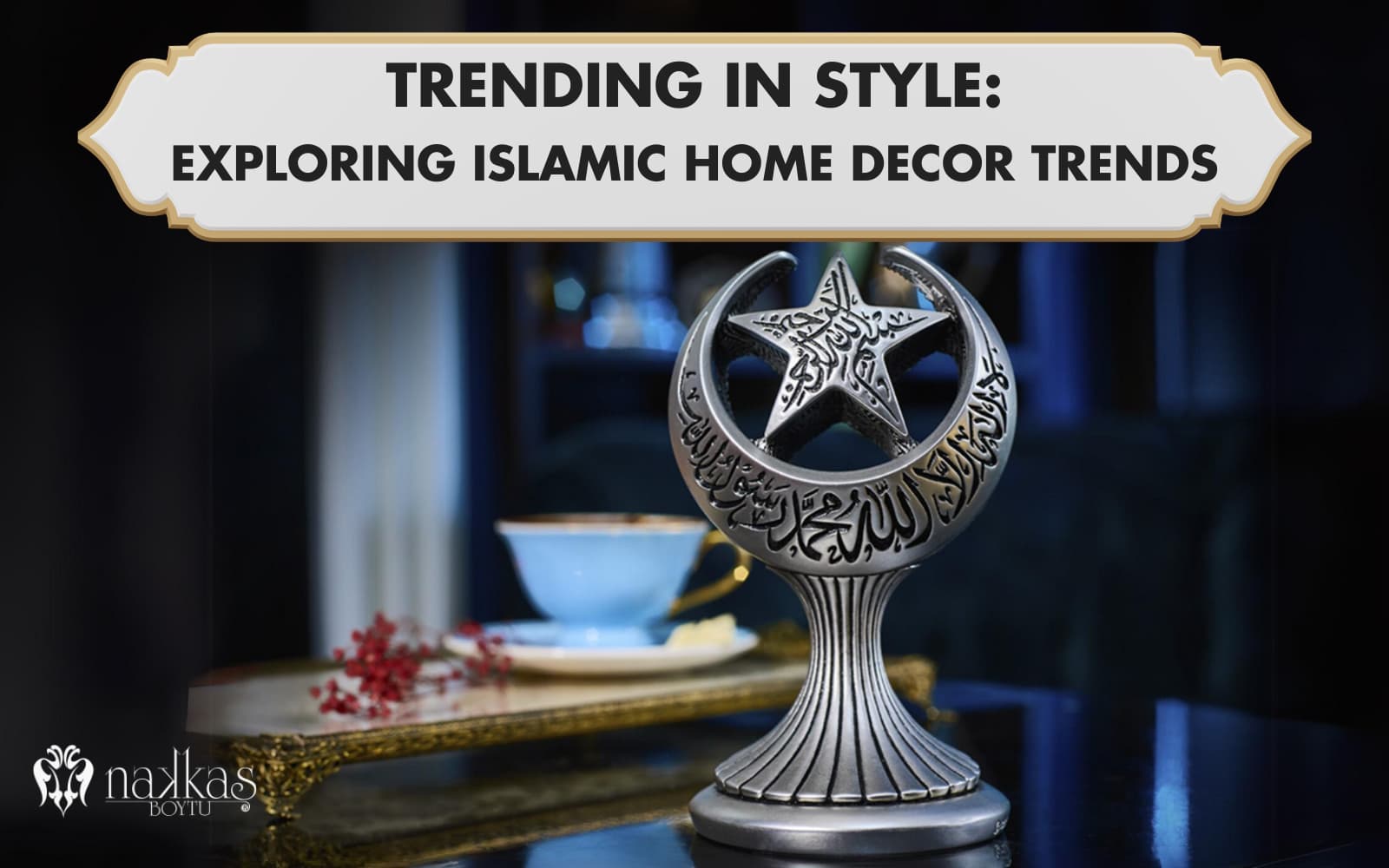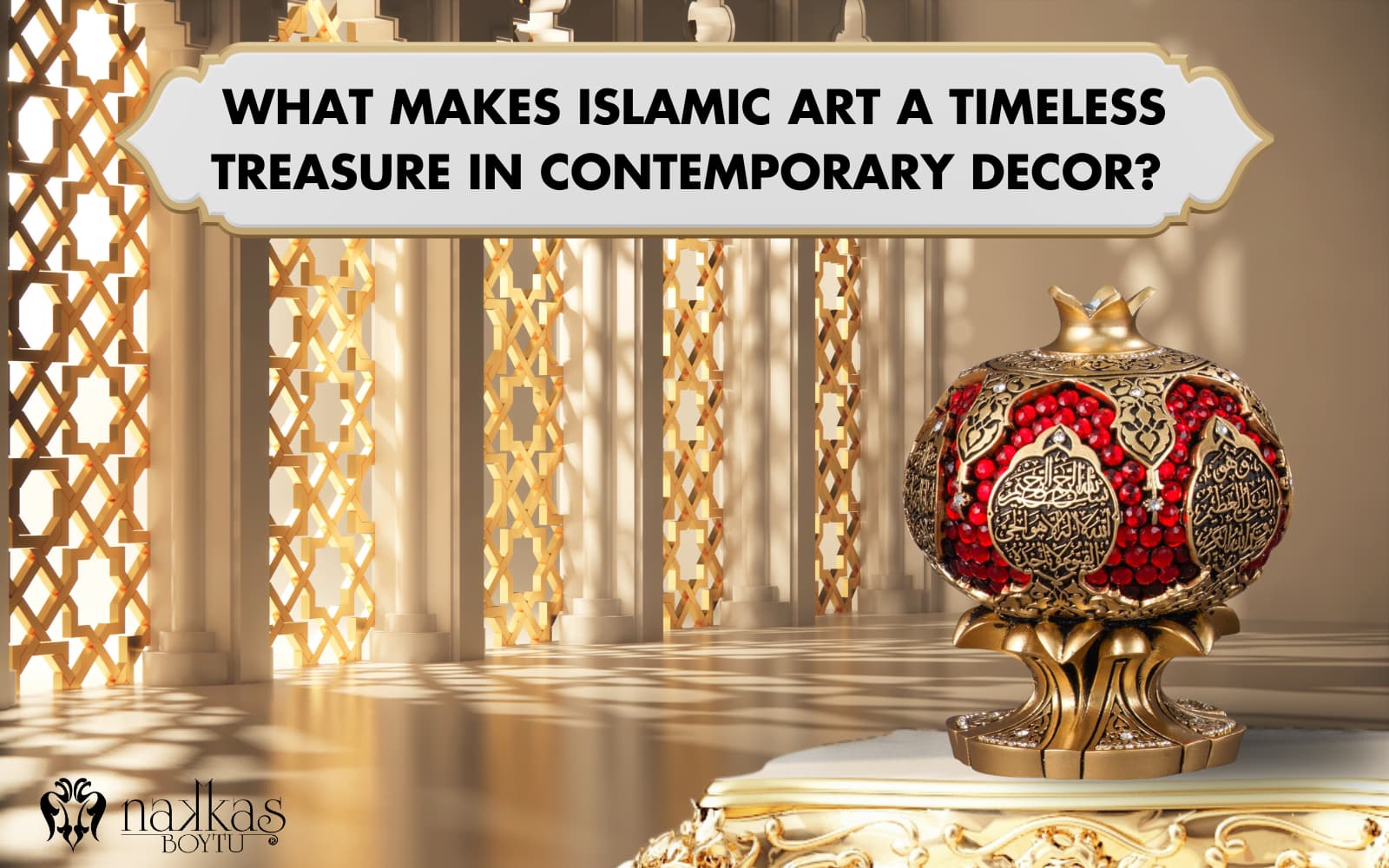Islamic wall art is not just about aesthetics, it's a unique blend of cultural and spiritual elements. It's a testament to the artistic beauty and religious significance, transforming homes into sanctuaries of peace and contemplation. The intricate calligraphy, geometric patterns, textiles, and crescent symbols are not just decorations, they are deeply rooted in faith and heritage. The timeless elegance of Islamic art creates harmonious environments that reflect styles and values. Keep reading the blog post to discover how Islamic wall decor can transform your space.
Islamic Wall Decor: Cultural Values and Aesthetic Understanding
Islamic wall decor beautifully reflects societies' values and cultural understandings. Calligraphy, especially in elegant Arabic script, is a central element symbolizing artistic beauty and religious devotion. This art form often decorates walls with verses from the Quran, enhancing the spiritual ambiance.
In addition, traditional crafts such as tile work and miniature painting (nakkashlik) display intricate designs and vibrant colors rooted in Islamic culture. These art forms bridge the gap between past and present with their timeless beauty and spiritual resonance.
The Role and Importance of Islamic Art in Home Decoration
Islamic art plays a vital role in home decoration, embedding spiritual, social, and religious beliefs into everyday living spaces. Intricate calligraphy and geometric patterns deeply connect with one's faith and heritage.
Islamic art transforms homes into sanctuaries where the spiritual atmosphere is felt. It encourages reflection and a deeper appreciation of cultural roots. It reminds people of their spiritual journey, enriching the home's ambiance with peace and awe.
What Are the Most Popular Types of Islamic Wall Decor?
Here are the most popular types of Islamic wall decor:
- Calligraphy Panels
- Geometric Patterns
- Wall Carpets and Kilims
- Crescent and Star Figures
- Marbling and Canvas Paintings
- Obje
How is Islamic Calligraphy Used in Wall Decor?
Islamic calligraphy is used in wall decor to integrate faith and aesthetics. These meticulously crafted pieces serve as daily reminders of faith and devotion. From wood paneling to modern metal designs,
Islamic calligraphy wall decor complements home decor styles, adding spirituality and beauty to their spaces.
What Are the Islamic Geometric Patterns Used on Home Walls?
Islamic geometric patterns for home walls are intricate designs that symbolize the infinite nature of creation. They include shapes such as hexagons, octagons, and stars.
In traditional and modern Islamic art, geometric patterns add a sense of harmony and balance to homes.
How Do Textiles Contribute to Islamic Wall Decor?
Textiles contribute to Islamic wall decor by adding layers of color, texture, and cultural richness. They feature intricate patterns and calligraphies that reflect Islamic art traditions and enhance the spiritual ambiance of a space. Carpets and kilims in Islamic wall decoration add warmth and depth, complementing other decor elements. Rugs, tapestries, and embroidered pieces integrate seamlessly, enriching the overall aesthetic and providing a cohesive and harmonious environment.
How are Crescents and Stars Used Creatively in Islamic Wall Decor?
Crescents and stars, iconic symbols of Islamic culture, are creatively integrated into Islamic wall decoration to evoke spirituality and aesthetic appeal. Wood paneling and metal wall table artworks often feature
crescents and stars intertwined with calligraphy, adding cultural and religious meaning layers. These symbols are also found in various other applications, such as textiles, furniture, and architectural details, infusing spaces with a sense of peace and divine connection.
Enhancing Islamic Wall Decor with Marbling and Canvas Paintings
Marbling and canvas paintings combine vibrant colors and intricate patterns, enhancing the spiritual and cultural significance of the artwork. Marble wall table designs add a fluid and organic touch, while canvas tables offer depth and texture. Together, they create visually stunning pieces that resonate with faith and heritage, transforming any space into a harmonious blend of tradition and contemporary elegance.
What are the Auxiliary Objects Accompanying Islamic Wall Decoration?
Elegant wooden calligraphy pieces, intricate metal artwork, and warm, soft lighting accompany Islamic wall decoration. These objects' color coordination and design around the wall decor contribute to a serene and reflective atmosphere, spiritually enlivening the space. In addition, decorative elements such as ornate vases, intricately designed cushions, and beautifully crafted lanterns add depth and richness to the decor.
Nakkaş Boytu products can complement Islamic wall decorations by offering a range of elements that seamlessly integrate with the main decor to create a harmonious and visually appealing whole. These products help create an environment where each element enhances the others, creating a beautifully balanced and culturally enriched space.






